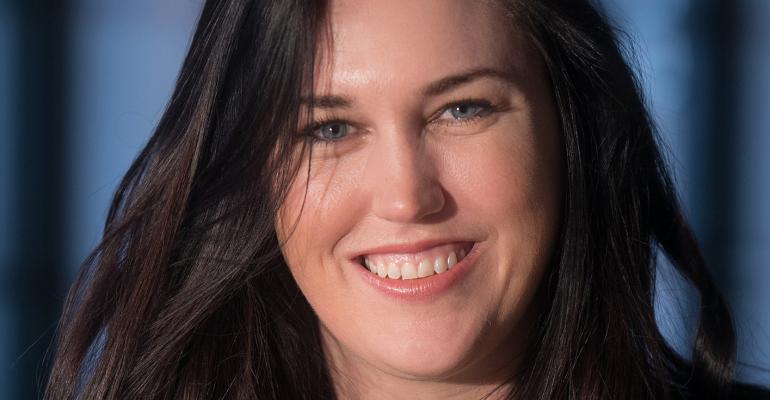As society becomes more open and accepting of all differences, this transitionary period also sees some confusion about how to adapt without being offensive. In the wedding industry, this is especially difficult as we only just celebrated freedom to marry in the U.S. in the last five years. As representatives of the front line in all things romance and marriage, it’s critical that we create an industry that is welcoming and inclusive to all couples who simply want to celebrate their love together.
Still, it is understandable that many wedding professionals must learn the ropes of this new generation of pronouns, orientations and identities. The more it becomes mainstream, the less tolerant the public will be of a discriminatory faux pas--even if it is simply out of ignorance.
Thus, a big part of adjusting a business to welcome trans couples (and all couples, for that matter) is through educating yourself about the needs of the LGBTQ+ community and being mindful of the language being used.
Understanding Terminology
For some, there is still confusion about the term “transgender,” so let’s start by clarifying what that means. People are transgender when they do not identify with the sex they were assigned at birth--they may identify as transgender or simply as the gender that they identify with. It’s important to respect the gender and terminology that a person identifies as, whether that’s male, female, non-binary, transgender, etc.
It’s also important to differentiate between biological sex and gender identity. Undergoing physical and hormonal changes and surgeries to adhere to what society deems to be “male” or “female” can be restricted due to financial limitations or simply because of personal choice. Identify is not dependent on a person’s physicality, but who they are in an internal sense.
Working with Trans Couples
When it comes to the big picture, working with a trans individual and/or couple is like working with any other couple. The pair is newly engaged, excited to start their lives together, and looking to you for guidance and support in planning their wedding.
However, when you get down to the details, there are some things you need to be mindful of in terms of etiquette and considerate communications. Here are the main ways that you can create a more inclusive environment in your company that is welcoming to people from all walks of life, regardless of gender identity or sexual orientation:
1. Use preferred pronouns
You’ve likely seen preferred pronouns popping up around the Internet as people update their bios with “she/her,” “he/him,” or “they/them.” Never assume pronouns--with anyone!
I recommend asking for preferred pronouns from all potential clients in your initial contact form. It’s worth noting that the three pronoun pairs mentioned above are the most commonly used, but there are others like “ze” and “hir,” so always be sure to clarify with each client. You should also be aware of the third gender title, Mx. (pronounced “Mix”), in addition to Mr., Mrs. and Ms.
2. Exhibit sensitivity
Everyone in the LGBTQ+ community is on their own journey, and not all of them are ready to be “out,” regardless of what others think their wedding means.
Refrain from asking them personal questions and let them lead with the information they choose to share. Never out someone as transgender. Some people may be comfortable disclosing their gender history, whereas others are not. It’s not your decision to make, so keep it to yourself unless explicitly told otherwise.
3. Embrace inclusivity
Gender-neutral language is a must in communications and in marketing materials. This is a great first step for those who want to reach the LGBTQ+ community, but it goes beyond the words you use as well.
Consider the imagery that is on your website, social media, and the walls of your office. I also recommend having gender-neutral restrooms in your office and, if a venue doesn’t have one, offer to tape over the binary signage.
4. Incorporate traditions thoughtfully
Many common wedding traditions are heavily rooted in the cis-hetero couple experience, which doesn’t always align with LGBTQ+ preferences. In the case of transgender individuals/couples, it’s important to understand that sexual orientation and gender identity have nothing to do with each other, so a transgender person may very well be in a hetero relationship or a same-sex one. Regardless of identity or orientation, it’s always important to adapt traditions so that they’re reflective of that couple’s love story.
Let this guide serve as a first step in education about the transgender community, but don’t let it be your last. Continue learning and asking questions — it’s truly the best way to become a better person and a better business owner with an open mind to all who seek help.
Brittny Drye is the founder and editor-in-chief of Love Inc., one of the leading equality-minded wedding blog and digital publication. Her inclusive efforts have been celebrated by the New York Times, The Advocate, OUT Magazine, Refinery29, NY Daily News, Cosmopolitan, and more. She serves on the 2018-19 North American Advisory Board for the International Academy of Wedding & Events, and is a 2020 WeddingPro Educator for The Knot/Wedding Wire




